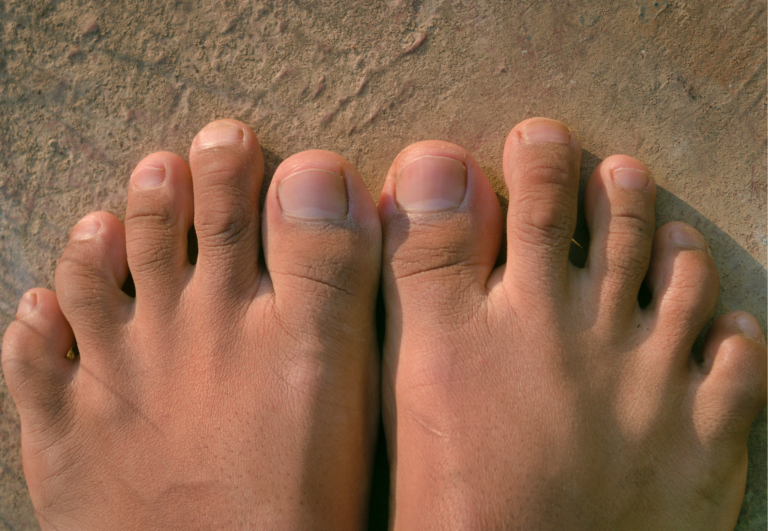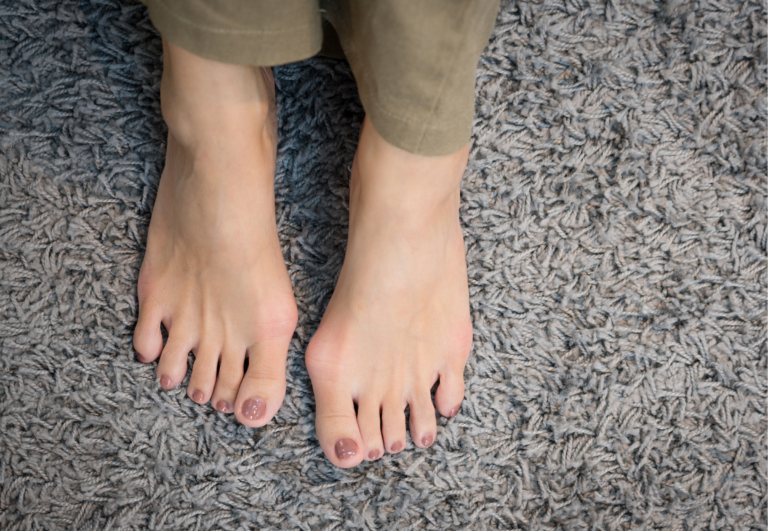How Toe Spacers Can Alleviate Metatarsalgia: Exploring the Potential Benefits
Toe spacers are an innovative solution for addressing various foot ailments, and they have gained attention for their potential to alleviate conditions like metatarsalgia, a form of foot pain occurring in the ball of the foot. As someone who has explored the world of foot care and the benefits of toe spacers without being a medical professional, I’ve come to appreciate their simple, yet effective role in foot health. My experience has shown that proper toe alignment facilitated by toe spacers can distribute weight more evenly across the foot, which may ease the discomfort associated with metatarsalgia.
The consistent use of toe spacers can retrain your foot muscles and ligaments to maintain the natural spread of your toes. This spreading can reduce the pressure and friction that contribute to the pain of metatarsalgia. By keeping toes apart, toe spacers may also help in preventing toe-overlap issues and bunions, both of which are common concerns that can exacerbate foot pain.
Incorporating toe spacers into your daily routine could potentially offer a non-invasive method to aid in managing foot pain linked to metatarsalgia. I always recommend selecting toe spacers made from soft, flexible materials to ensure comfort, especially during the initial stages of use when your feet are still adjusting to the separators. It’s also crucial to pace yourself and gradually increase the duration of wearing them to allow your feet to adapt comfortably.
Benefits of Toe Spacers for Metatarsalgia
Toe spacers are an effective non-invasive solution for addressing discomfort associated with metatarsalgia. They work by realigning toes to reduce pressure on the ball of the foot, thus providing pain relief and improving foot function.
Alleviating Pressure and Pain Relief
Toe spacers help distribute weight more evenly across the foot, reducing the excessive pressure that can lead to metatarsalgia. By separating the toes, they prevent the squeezing together of the metatarsal heads that causes pain and discomfort.
- Pressure Reduction: Evenly spread pressure to minimize stress on the ball of the foot.
- Pain Alleviation: Provides immediate relief from the sharp, aching, or burning pain in the forefoot.
Improving Balance and Stability
Proper toe alignment can contribute to better balance and stability, which are compromised in those with metatarsalgia. Toe spacers encourage a more natural foot position, enhancing overall support.
- Balance Enhancement: Correct toe positioning improves proprioception, aiding in balance.
- Stability Improvement: Optimal toe spacing contributes to a more sturdy and balanced gait.
Using toe spacers can be a key strategy for those seeking respite from the symptoms of metatarsalgia while pursuing activities of daily life with greater ease and comfort.
Anatomy of the Foot and Toe Alignment
The foot’s structure is pivotal for movement, and its alignment greatly influences overall foot health. Metatarsalgia is one condition that can arise from misalignment, characterized by pain in the ball of the foot, often due to undue pressure.
Understanding Metatarsalgia and Its Causes
Metatarsalgia is a condition marked by pain and inflammation in the ball of the foot. Common causes include:
- Excessive Pressure: Frequent stress on the forefoot from activities or ill-fitting footwear.
- Morton’s Neuroma: A thickening of tissue around a nerve leading to the toes.
- Hammer Toe: A toe deformity where a toe has an abnormal middle joint bend.
Contributing factors might also encompass high arches or excess weight, both amplifying pressure on the metatarsals.
Importance of Proper Toe Alignment
Improper toe alignment can lead to or exacerbate foot conditions, including metatarsalgia. Here, toe spacers play a significant role by:
- Promoting Natural Toe Position: Toe spacers help maintain the toes in their natural alignment.
- Reducing Strain: They can redistribute weight more evenly across the foot to relieve pressure on the metatarsals.
Correct alignment is crucial for mitigating pain and preventing further toe deformities or conditions by ensuring a balanced distribution of pressure during standing and movement.
Types of Toe Spacers and Material Considerations

In managing metatarsalgia, toe spacers can be integral for relief, made typically from silicone or gel to accommodate different needs and preferences.
Silicone vs. Gel Toe Spacers
Silicone Toe Spacers:
- Durability: Typically more durable than gel, making them a good long-term investment.
- Firmness: Offer a firmer support, which may be beneficial for more substantial toe realignment.
Gel Toe Spacers:
- Comfort: Often softer and more comfortable, mimicking the natural soft tissue of the foot.
- Flexibility: Adapt well to the contours of the foot, providing gentle separation.
Choosing the Right Toe Spacers for Individual Needs
When selecting toe spacers, consider the following:
- Material sensitivity: Ensure the material is hypoallergenic if you have sensitive skin.
- Toe condition severity: For more significant alignment issues, firmer silicone might be better; for mild discomfort, gel could suffice.
- Daily activities: Determine if you require spacers that are wearable during regular activities or only for use at home. Some toe spacers are slim enough to fit inside shoes, while others are designed for barefoot or at-home use only.
Practical Usage of Toe Spacers
Implementing toe spacers into your routine can help alleviate discomfort associated with metatarsalgia. Understanding how to effectively use them during daily activities and foot exercises is key for potential relief.
Daily Wear and Activities
When considering toe spacers for daily wear, it is crucial to pair them with the appropriate footwear. Shoes with a wide toe box provide the necessary room for toe spacers to fit comfortably. In my experience, they can be worn during routine activities such as walking or standing, potentially reducing pressure on the metatarsals.
- Ideal Footwear for Toe Spacers:
- Running shoes
- Casual shoes with a wide toe box
- Any shoe that can accommodate the extra width without constricting the foot
Incorporating toe spacers into your daily routine may take some getting used to, but consistent use can help in maintaining a natural toe alignment, which supports the distribution of your body weight more evenly across your feet.
Incorporating Toe Spacers in Foot Exercises
Integrating toe spacers into your foot exercises can enhance the stretching and strengthening of foot muscles. While I cannot prescribe medical advice, in my practice, exercises such as toe curls and spreads performed with toe spacers have shown to be more effective.
- Recommended Foot Exercises with Toe Spacers:
- Toe Curls: Curl your toes downward while keeping the spacers in place; hold for a few seconds before releasing.
- Toe Spreads: Attempt to spread your toes apart; the resistance of the spacers can increase muscle engagement.
Remember to always start with light exercises and gradually increase the intensity as your feet become accustomed to the spacers. This can help you manage metatarsalgia symptoms more effectively over time.
Professional Care and Toe Spacer Recommendations
When dealing with metatarsalgia, professional guidance and correct toe spacer selection are crucial for relief.
Consulting with a Podiatrist
My first advice to anyone experiencing foot pain from metatarsalgia is to consult with a podiatrist. These healthcare professionals can diagnose your condition accurately and develop a tailored treatment plan. A podiatrist will assess whether toe spacers can benefit you and instruct on their correct use.
Custom-made vs. Over-the-Counter Options
For toe spacers, you have two main choices: custom-made or over-the-counter. Custom-made options are designed to fit the unique contours of your feet, which can ensure a better fit and potentially more effective relief.
On the other hand, over-the-counter toe spacers are readily available and can be cost-effective. They may not provide the same level of personalization as custom-made devices but can still offer significant benefits. It’s important to weigh these options with a healthcare professional to decide the best course of action for your specific case.





